Changing the narrative of commercial development in Boston
D&E Street Development Competition
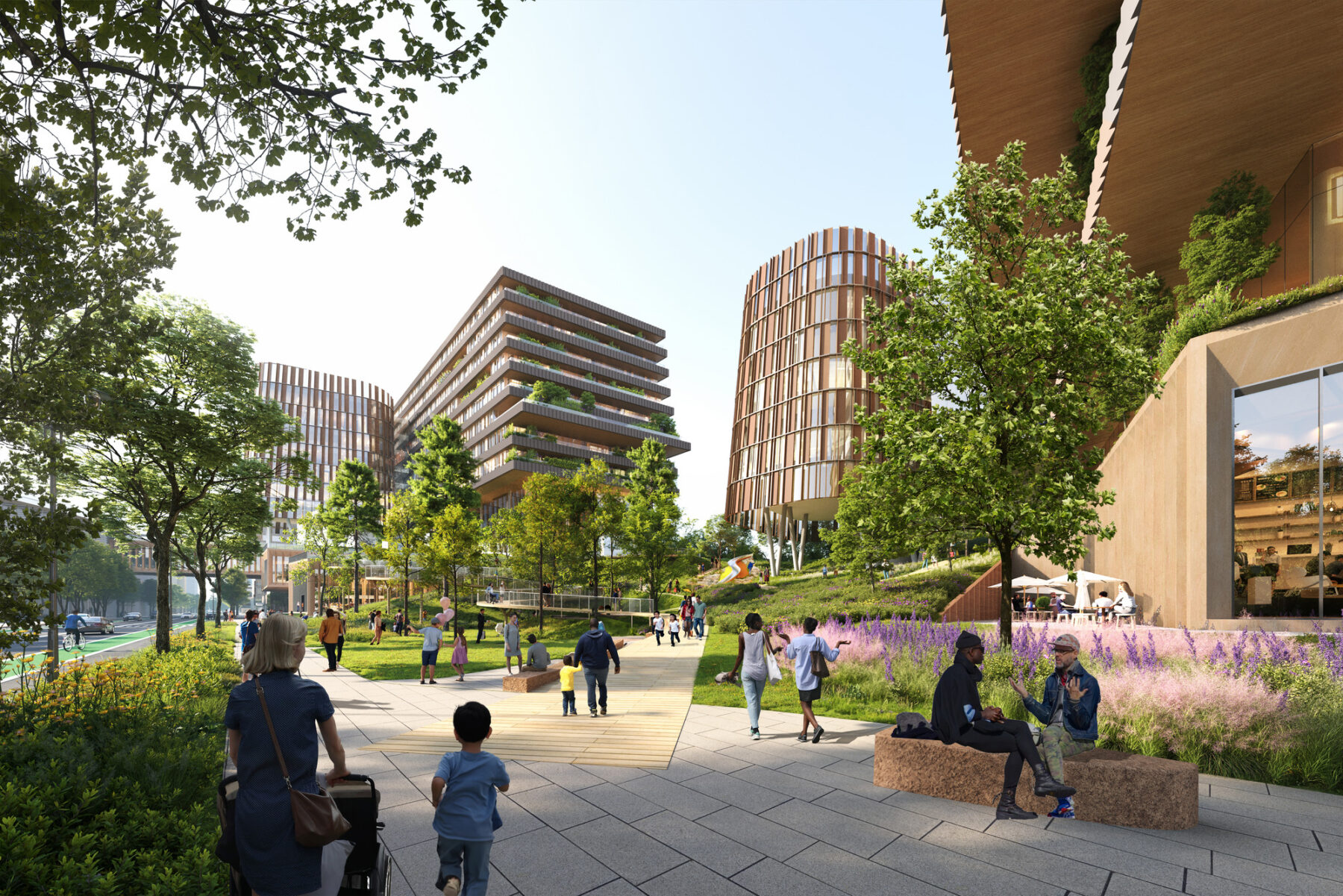
In June of 2023, the Massachusetts Convention Center Authority (MCCA) released a bid for the redevelopment of three parcels of land along D & E Streets in South Boston. Sasaki partnered with Cronin Development, Ionic Development, and Street2Ivy to respond with a transformative vision for the neighborhood rooted in diversity, equity, inclusion and community benefit.
With 1.6M square feet of development and over 3.2 acres of outdoor public realm, this project presents an opportunity to create a place that harnesses the momentum of the Seaport’s commercial market demand and links it to the vibrancy of South Boston’s strong residential fabric. The design presents a chance to envision a catalyst for the future development of the region while establishing a place to support vitality and equity year round for generations to come.
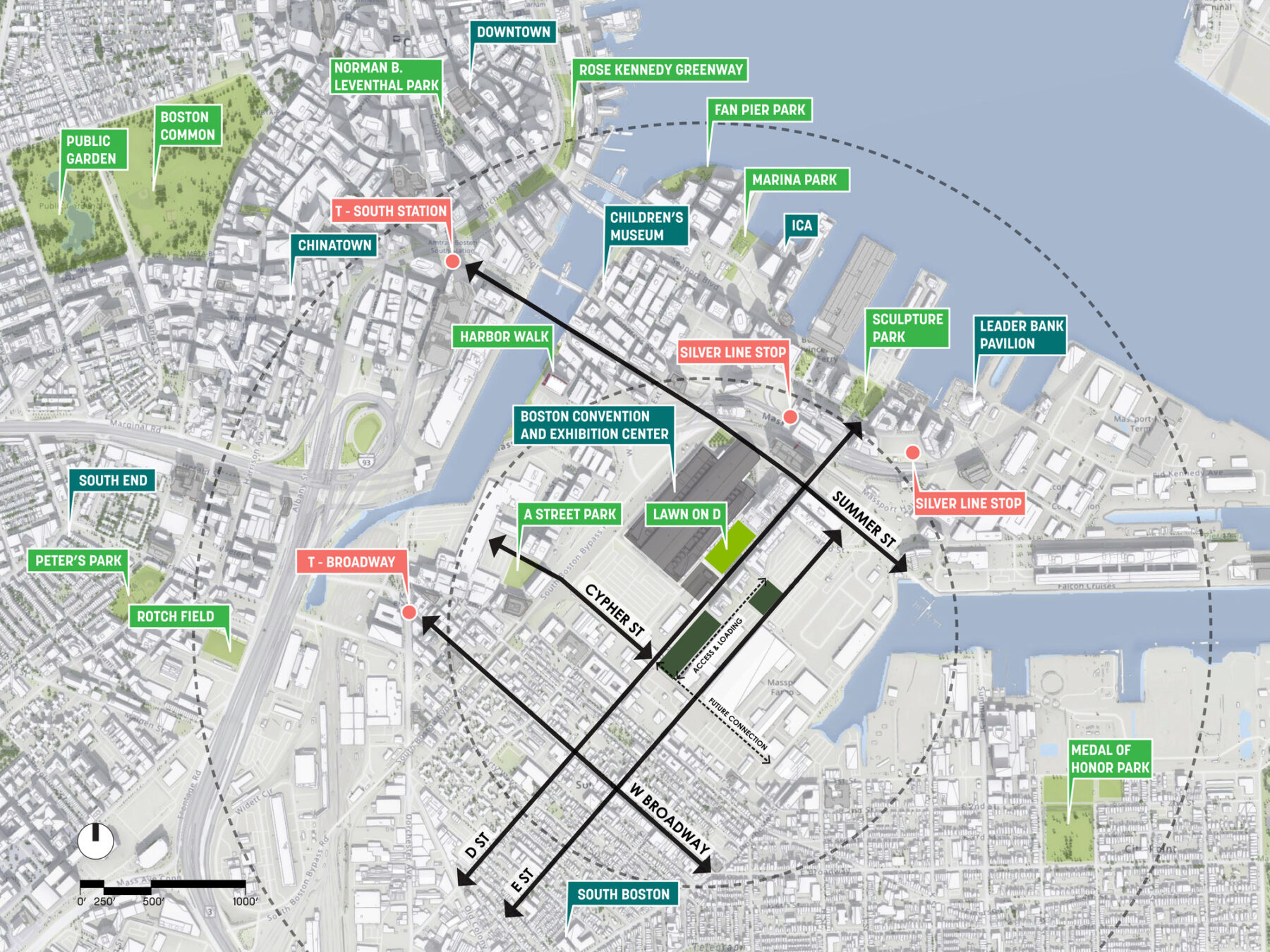
The project site serves as a link between the Seaport and South Boston neighborhoods, activating the evolving D Street corridor
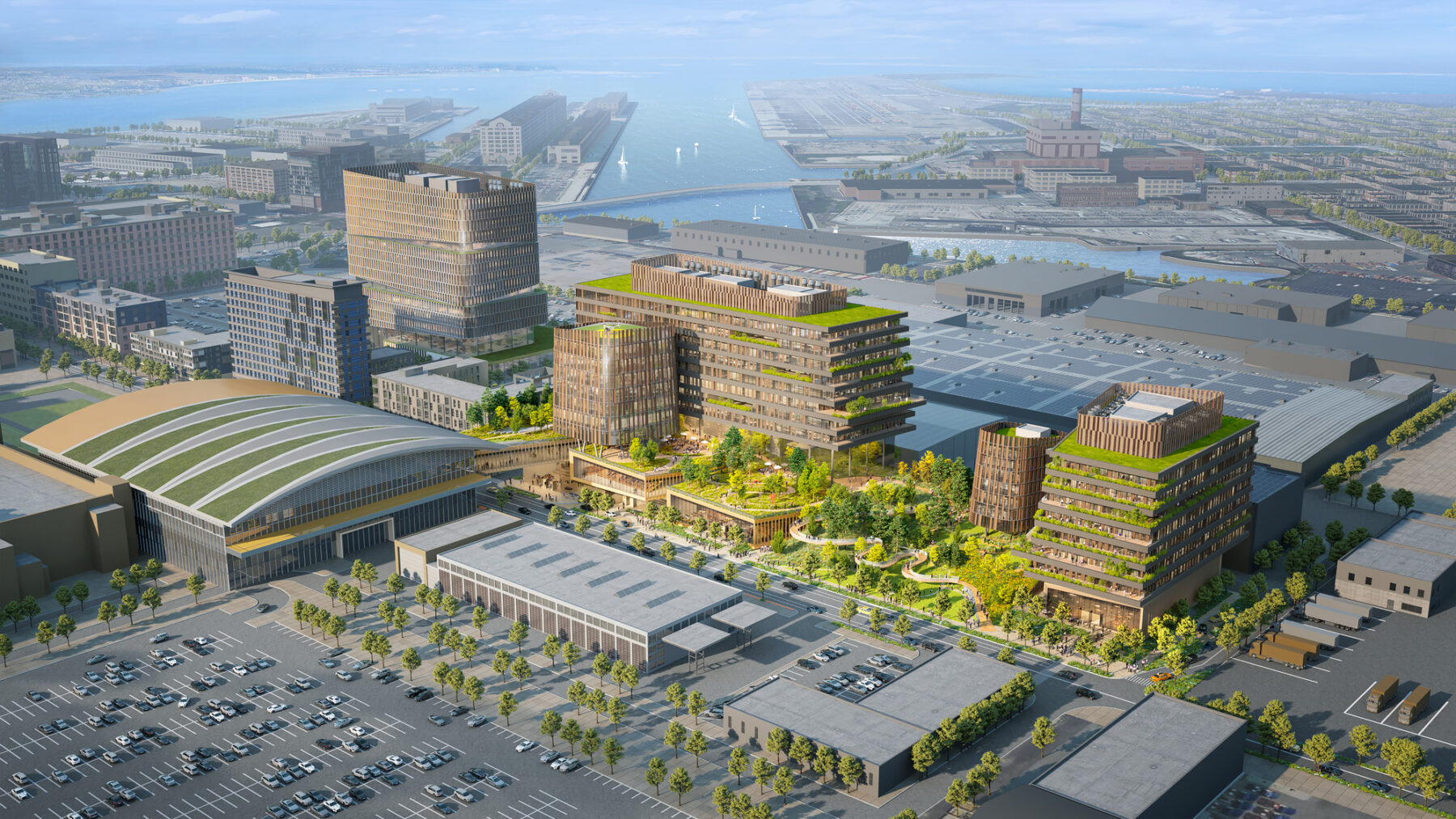
1.6M square feet of community and commercial spaces fill the three MCCA-owned parcels
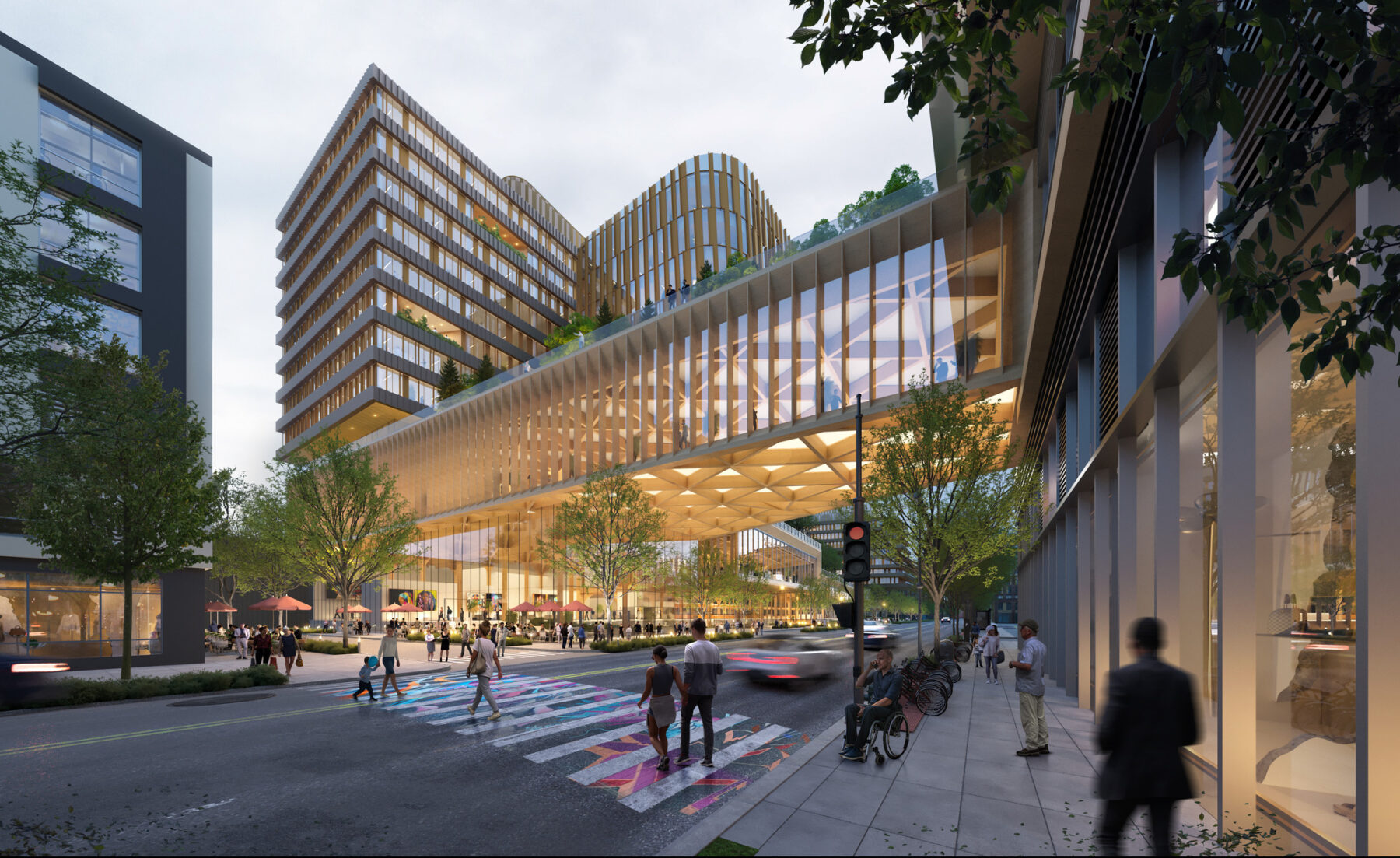
A sky bridge connecting to the BCEC frames the approach from the north. Transparent facades at the lower levels create a continuity of activity from the exterior streetscape to the interior community spaces
A Bold Architectural Expression
A dramatic shaping of the building along D Street allows for public access to the indoor spaces from the street while also creating an iconic landscape form. Cuts in the podium’s mass provide a more human scale to the architecture, breaking down the street wall presence and developing a cadence as the building marches along. The push and pull of those pieces create a dynamic street frontage; overhanging canopies reach out and engage the street activity while recessed building entries allow life to reach far into the interiors. The bulk of the upper massings sit in efficient bars at the back of the site, reducing the development’s presence at the street.
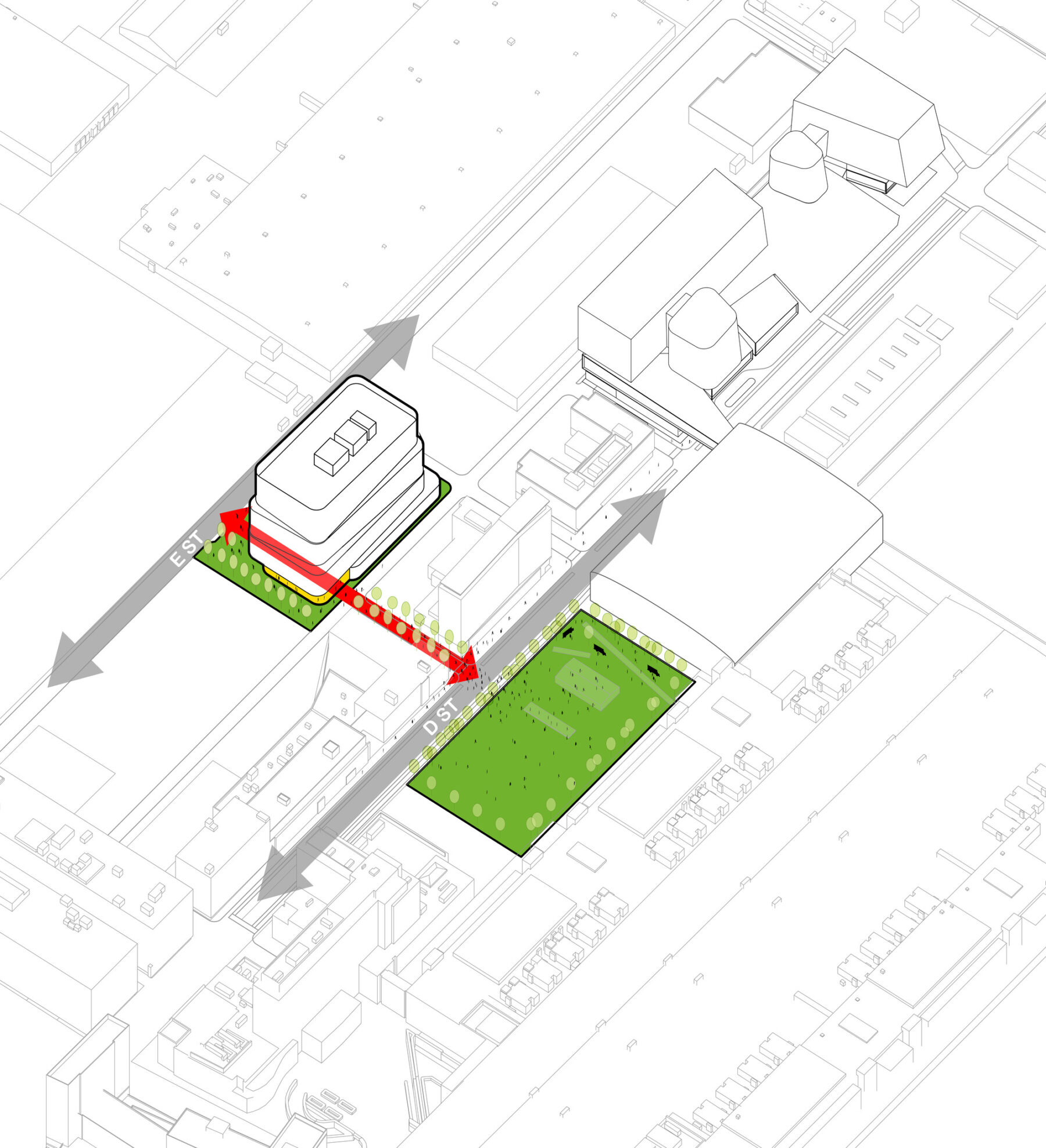
The massing along E Street has a direct connection to the Lawn on D, creating a strong pedestrian link between D & E Streets
The massing along E Street forges a direct connection to the Lawn on D, creating a strong pedestrian link between the two main streets. Setting back from the property line to create an outdoor plaza and aligning the main lobby along that pedestrian axis, this massing encourages movement across the neighborhood and draws activity to and through the new building.
The building heights respond to the surrounding context, with the lowest massing on the South Boston edge of the site in a nod to the residential scale, and the tallest building sitting closer to the Seaport and its higher structures. The facade is adorned with building integrated photovoltaic panels, subtly angled for optimal solar exposure and maximum renewable energy generation. The horizontal motif of the bars anchor the masses at the rear of the site, allowing for a more articulated facade to envelop the pavilions and engage with the streetscape.
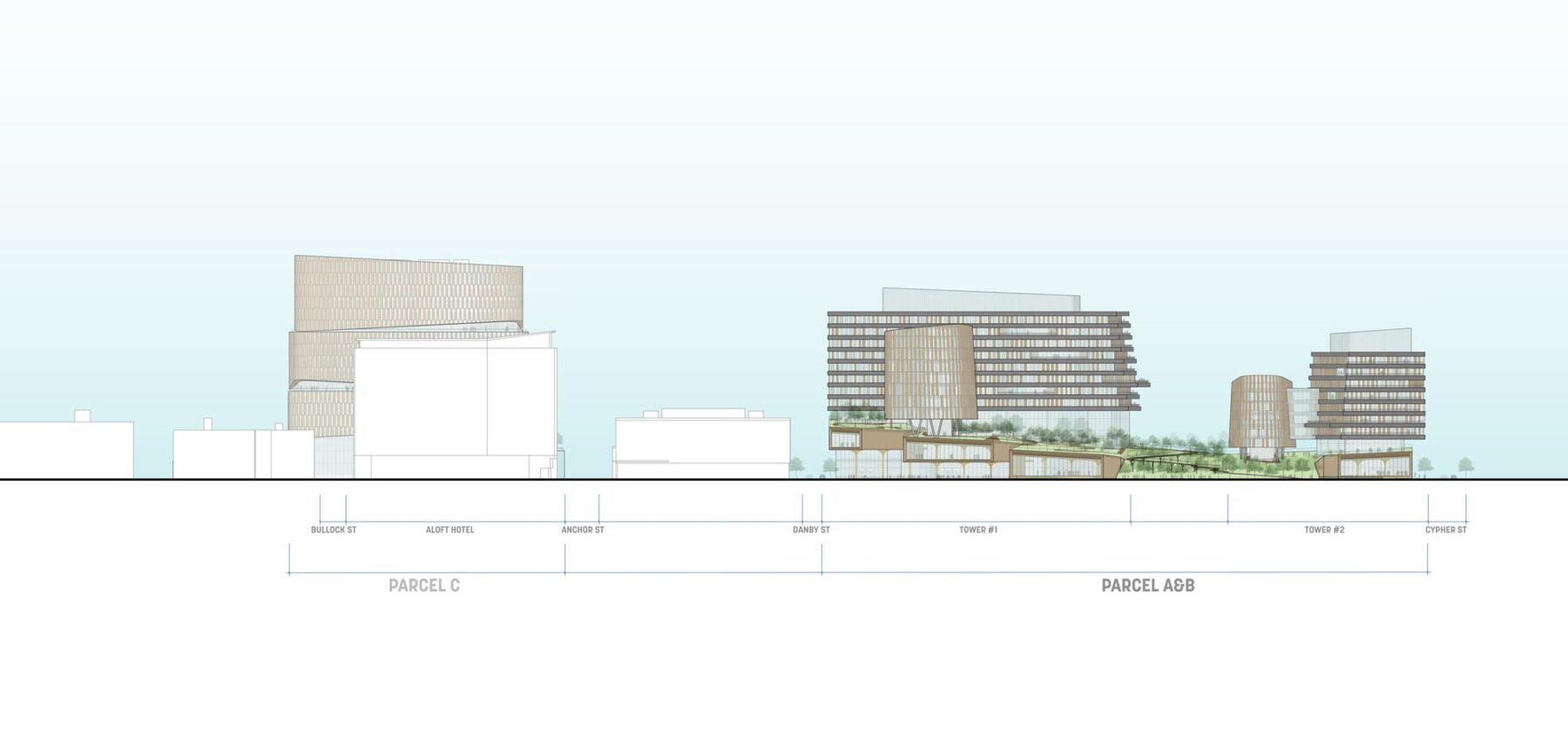
The building heights are lowest on the South Boston edge of the site and rise up towards the Seaport
Enhanced Program
Focused on diversity, equity, and inclusion throughout all aspects of the project, Sasaki and the development team created a programmatic offering for the local community, the City of Boston, and the Commonwealth as a whole. With over 140,000 square feet of community-facing programming on the lower levels, the D & E Street Development will serve as an economic engine for people of all walks of life, offering commercial space to individuals and businesses that are otherwise underrepresented in Boston.
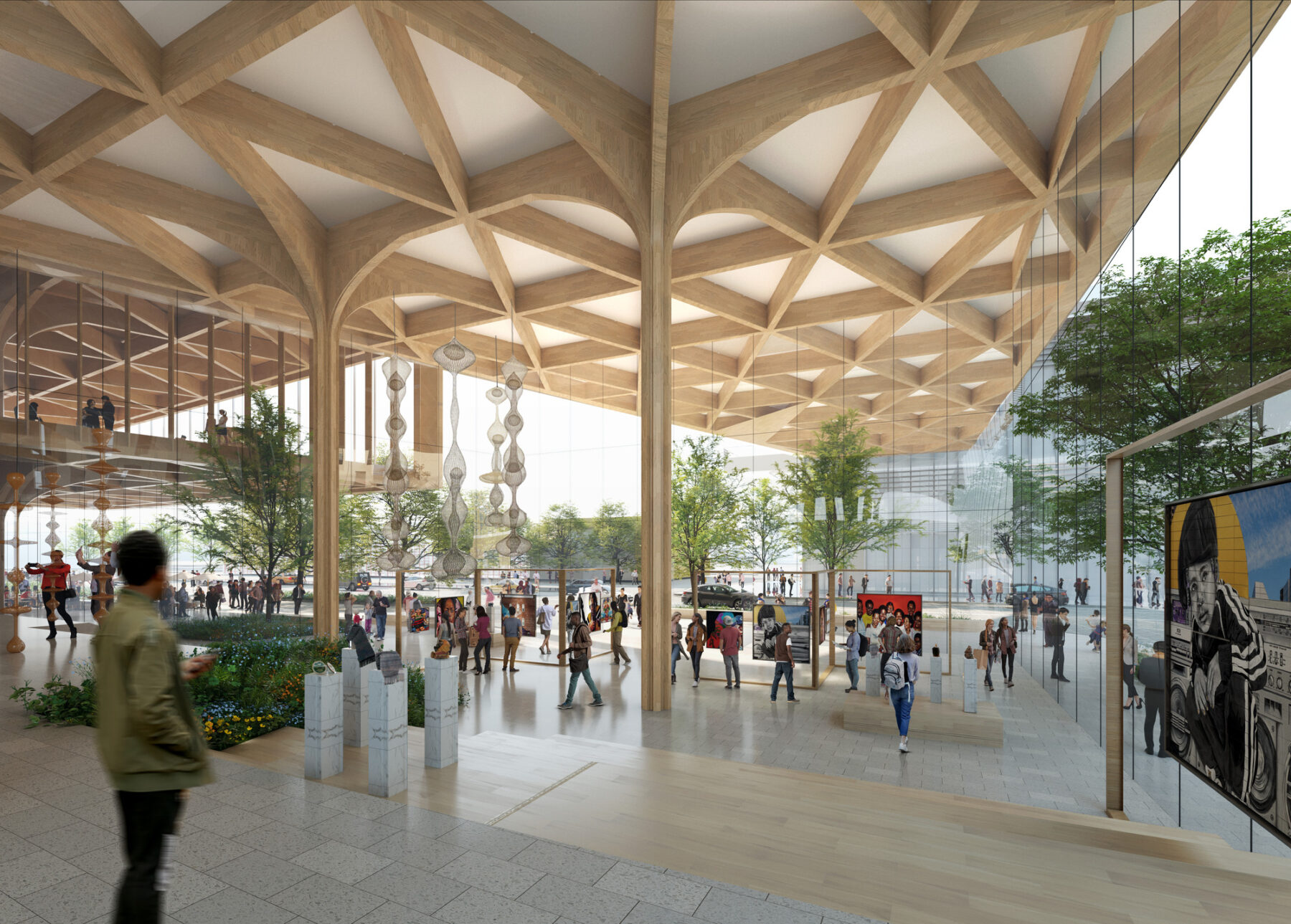
The BLK Chip Gallery will display the works of some of Boston’s best up and coming artists of color
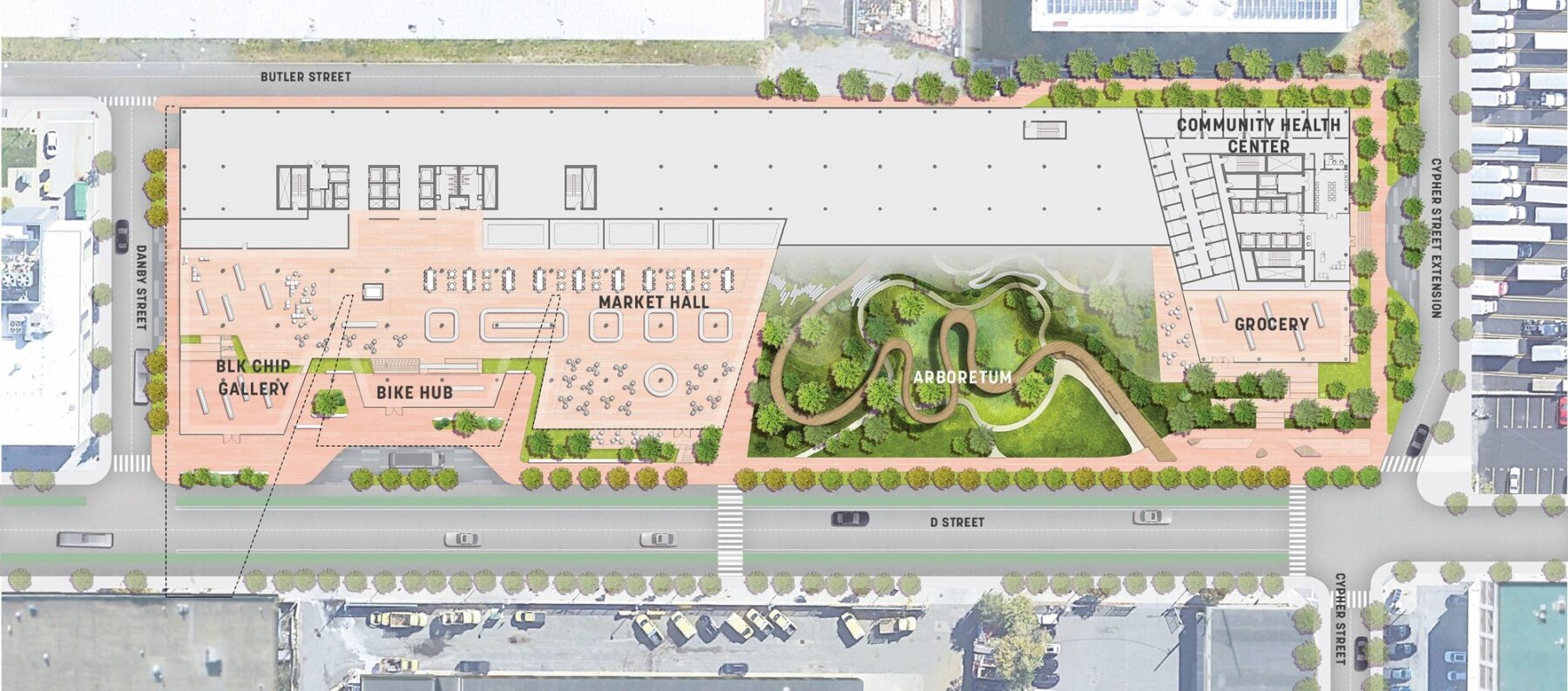
The ground floor welcomes the community into the development, offering retail, social services, and access to abundant neighborhood amenities while bringing activity to the street throughout the day and year
Amenities include a grocery store with grab-and-go prepared foods, a community health center for urgent and preventative care, and a family engagement center with subsidized child care center. A new, Black-owned 40,000 square foot film studio partners workforce training programs with good union jobs, taking advantage of new Massachusetts tax legislation and bringing new industries to the city and state for generations to come.
Rounding out the program is over 1M square feet of state-of-the-art lab-ready commercial space. Recognizing today’s advancements in life sciences and green technology, the development will support current and emerging industries with a robust and adaptable offering in the office and lab space.
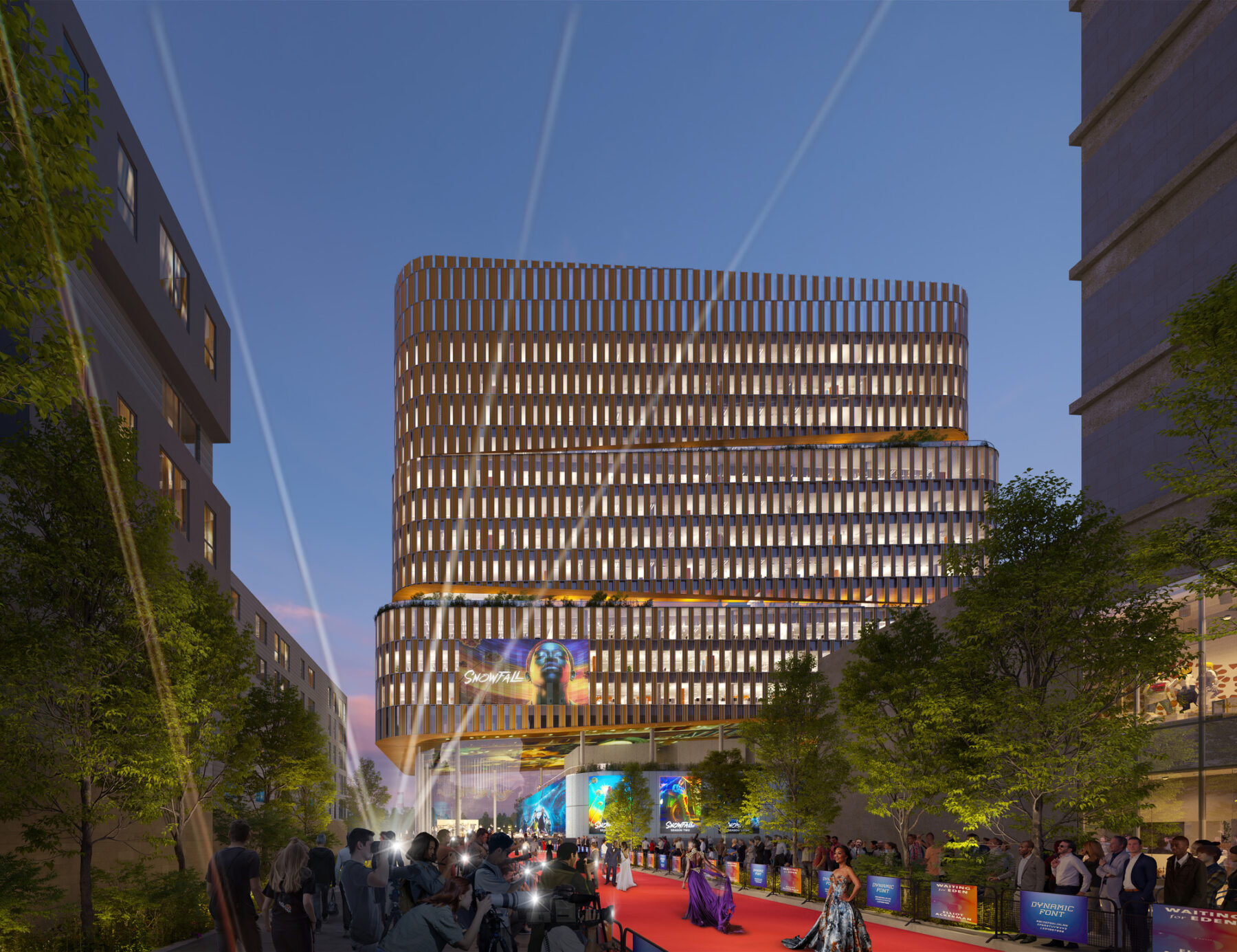
A film studio brings new industry opportunities to Boston and the Commonwealth
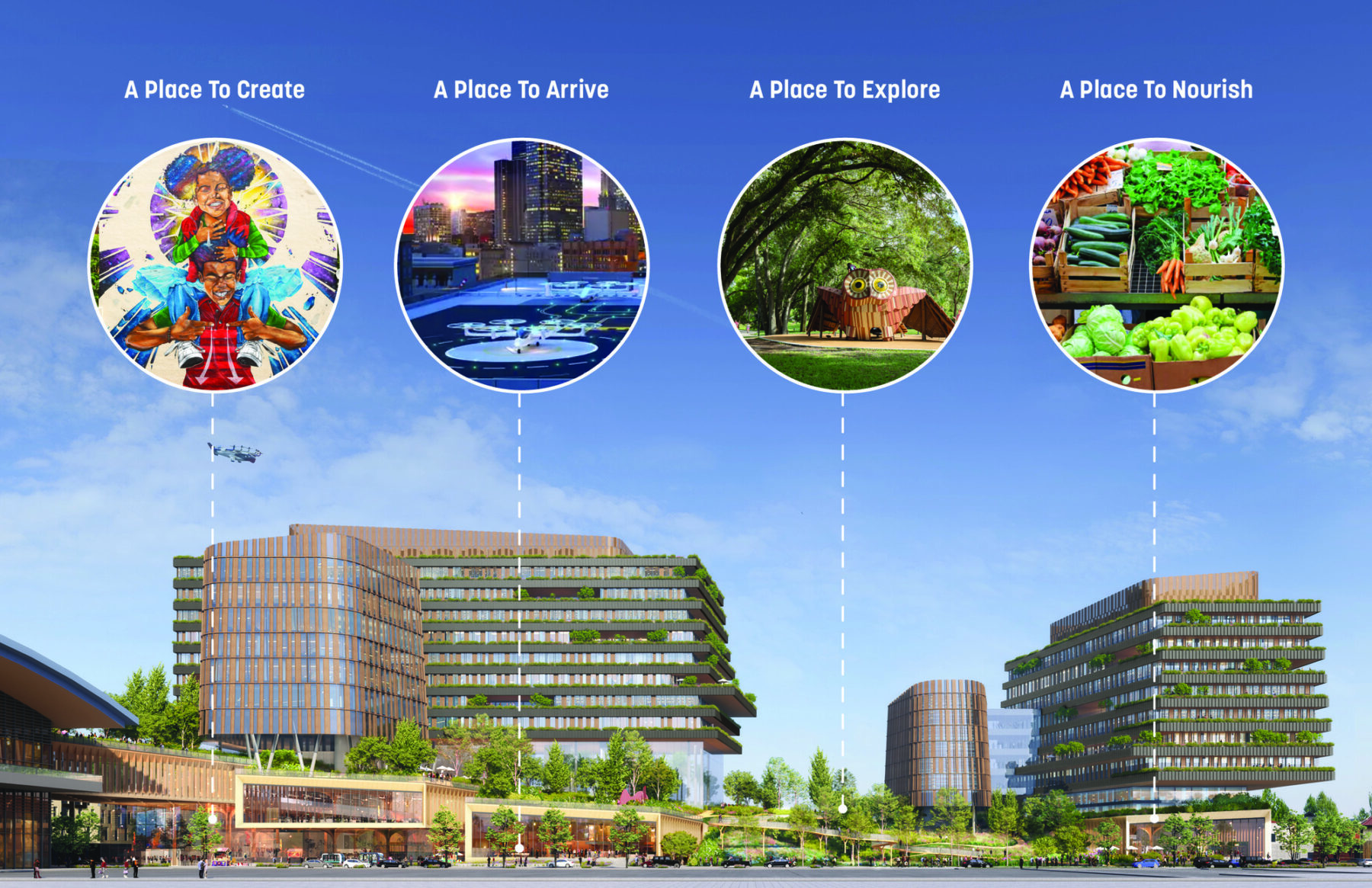
A strong mix of programs delivers community benefits that support all users
A Signature Green Space
A 2.75-acre class one arboretum caps the community spaces along D Street, hitting the ground at the midpoint of the block and drawing people up into a lush urban oasis. With over 25 different species of trees and a foundation with a strong arts and culture program, this outdoor urban wilderness creates a sense of wonder and amazement for all who visit.
A complement to the Lawn on D, the new Basin Grove provides an open landscape among a shady copse of tall trees with a gentle slope that creates a buffered green space for individuals or small group gatherings. Gradually rising above the ground from the arboretum, a Canopy Walk offers a fully accessible route from the sidewalk to the upper areas of the dense greenery.
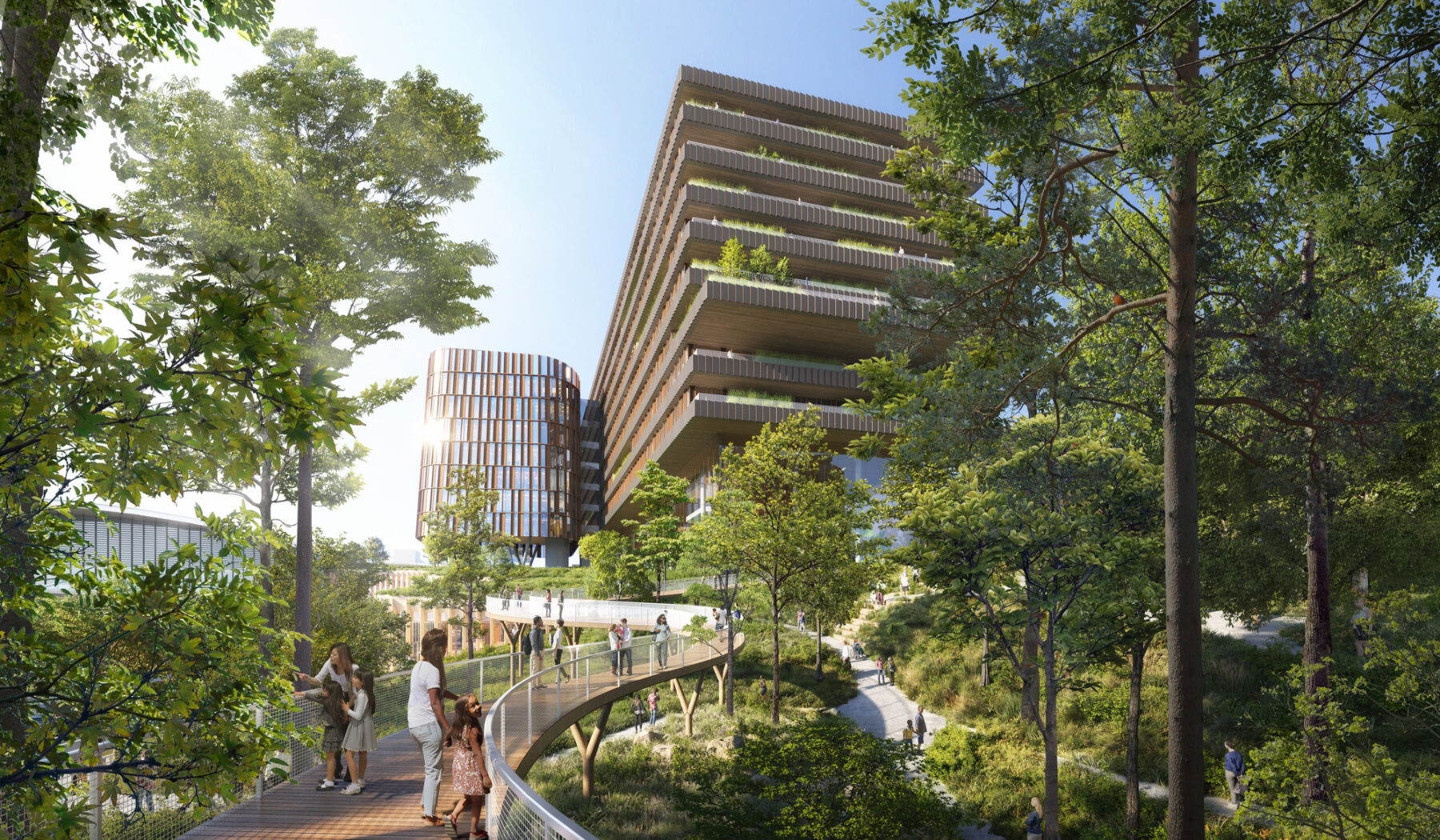
A canopy walk helps navigate the slope of the arboretum, and brings visitors up close to the trees and plantings
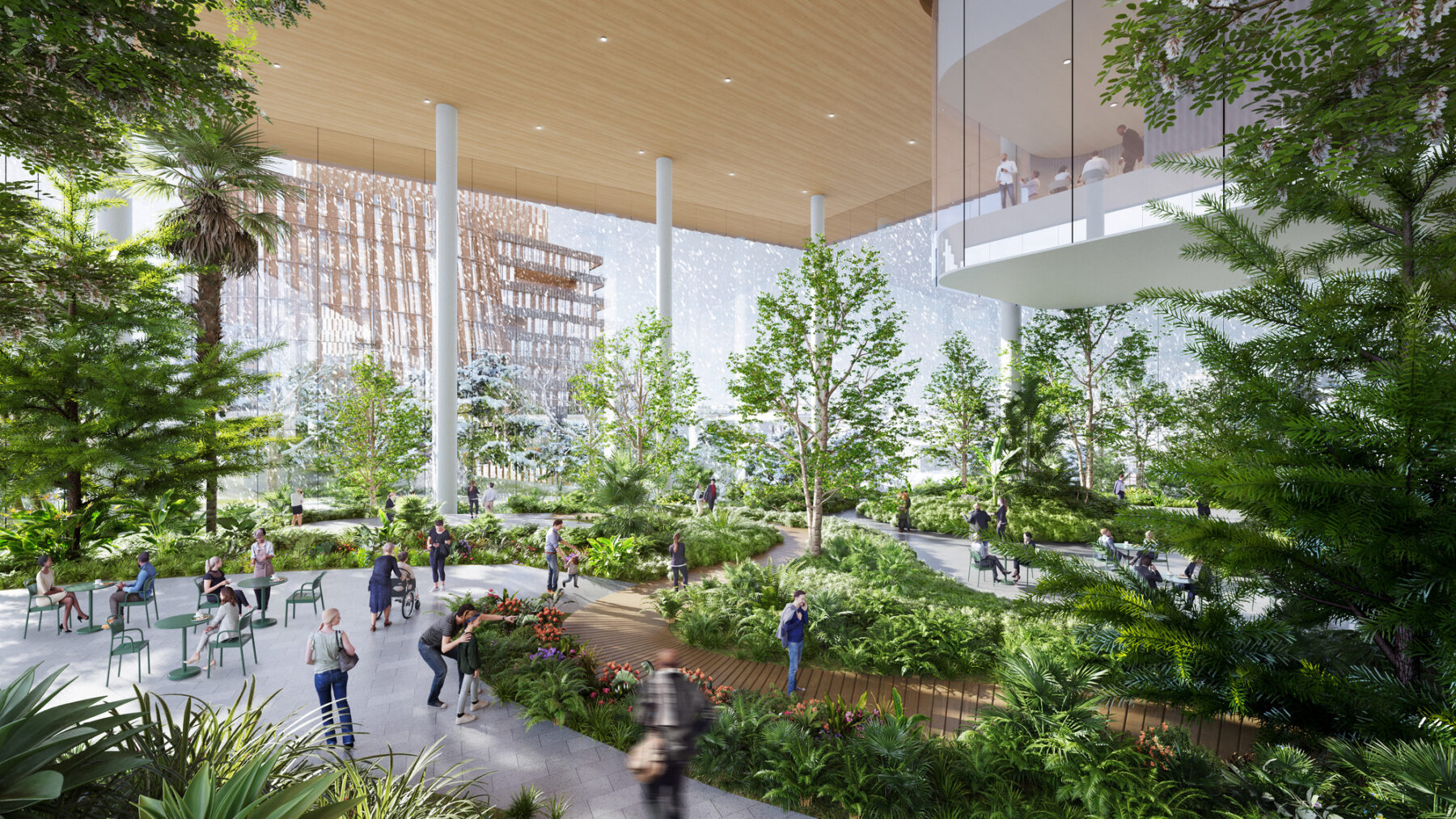
An indoor Winter Garden extends the use of the arboretum to a year round amenity for the neighborhood, allowing for the presence of more tropical plants that need milder climates
Designed specifically for young minds to wander and explore, a dedicated Children’s Garden is paired with robust plantings and colorful flowers, offering an immersive place for children to engage their senses and learn about the life cycles of the fauna. Meanwhile, a Sculpture Garden houses large three-dimensional artwork nestled between the trees to offer an integrated balance of art and nature. A culmination of the Arboretum, the Amphitheater offers a covered open stage for public events both large and small while also making space for budding creatives to share their talents in an impromptu, all-access environment.
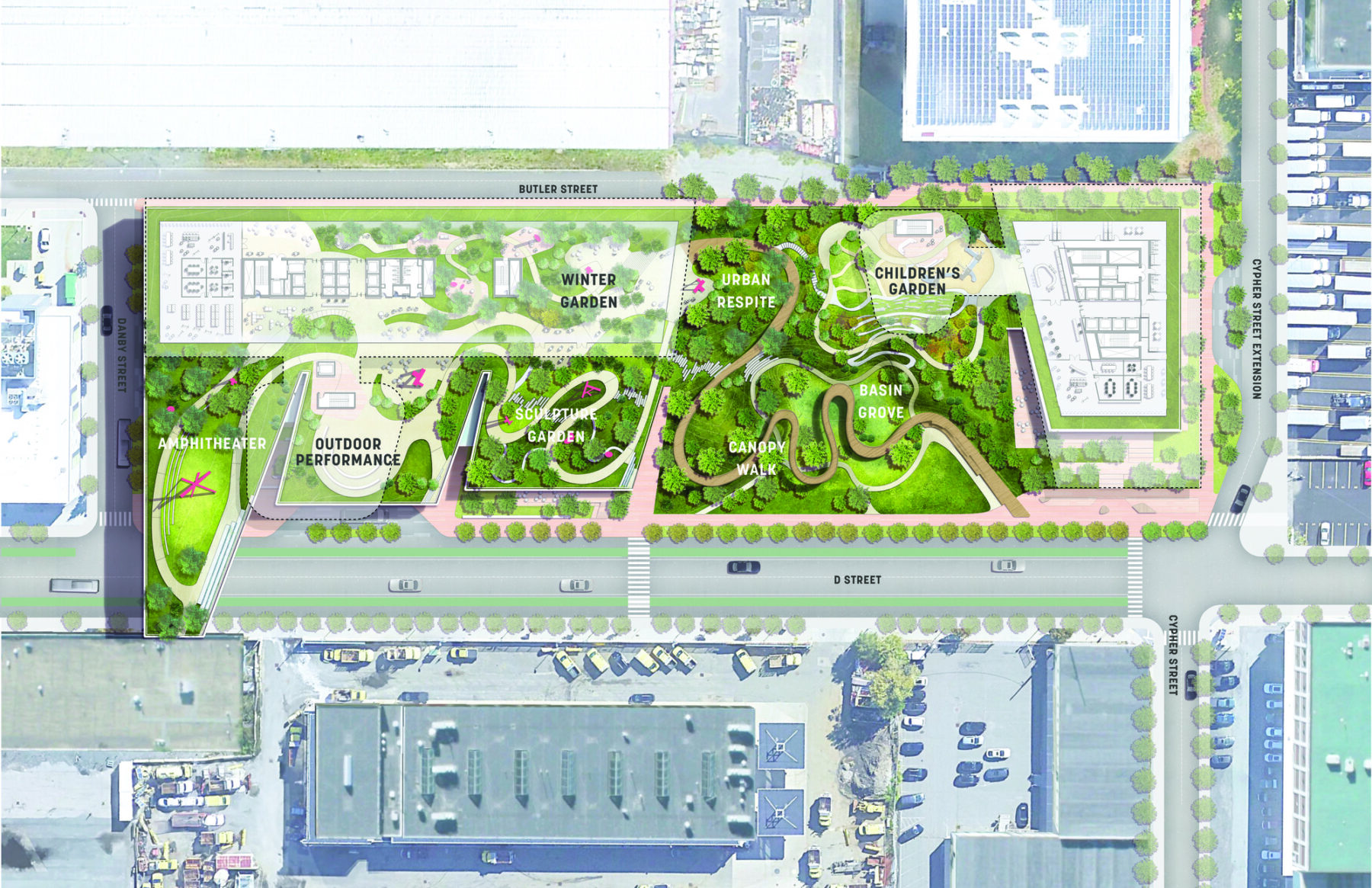
The arboretum stretches across both parcels on D Street, creating opportunities for all levels of programming
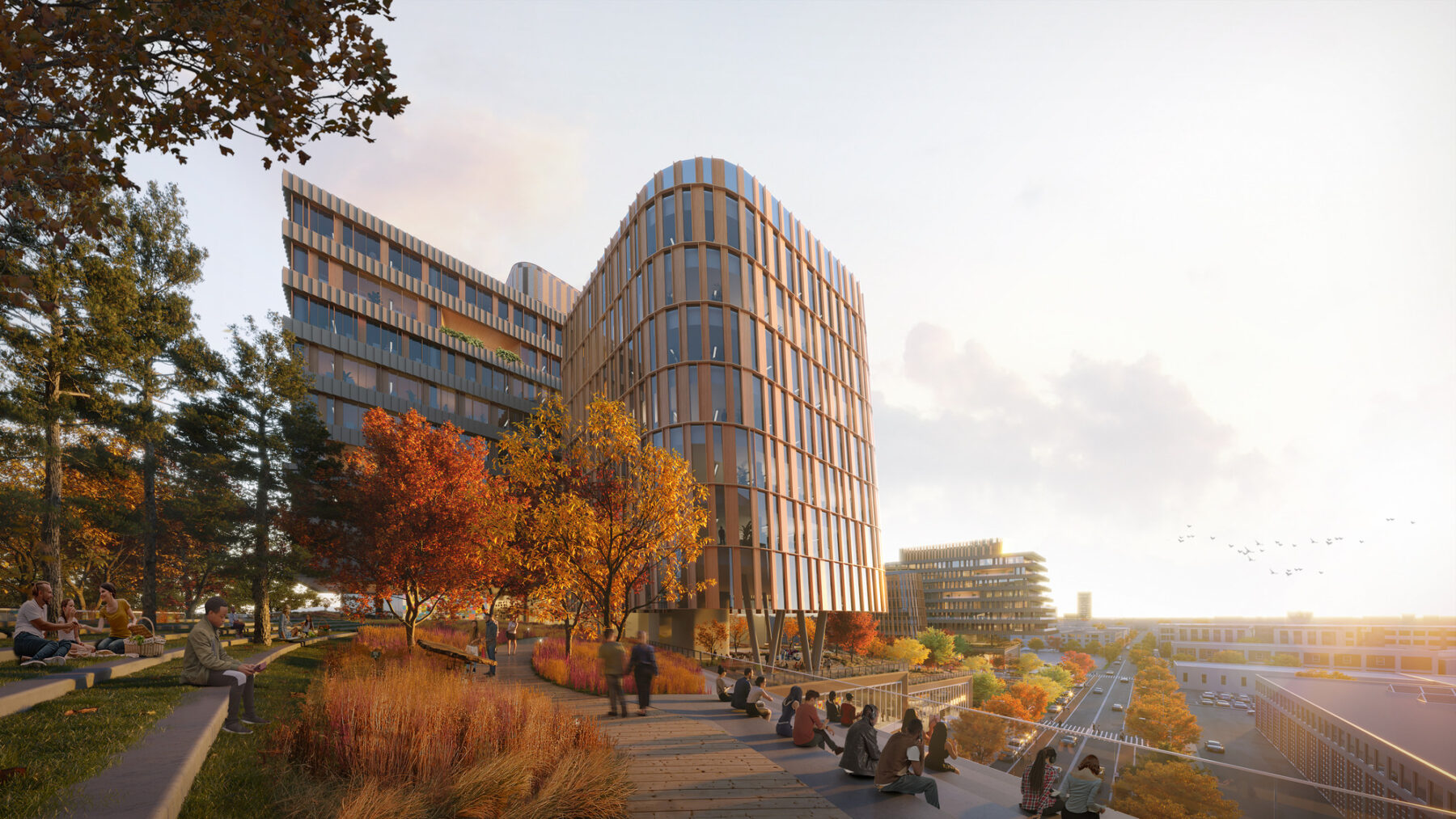
A variety of species within the arboretum ensures exciting and flourishing flora through all seasons
Remarkable Resilience
From high performance buildings and future forward mobility, to flood resilience and increased biodiversity, the proposal raises the bar for environmentally responsible and adaptive design. Focusing on LEED Zero Carbon and Boston’s BERDO 2.0, the development seeks to minimize greenhouse gas (GHG) emissions and embodied carbon. A mass timber structure supports the entire podium, helping to reduce the development’s embodied carbon footprint while creating a welcoming, vibrant ambiance to the public spaces.
Moving the needle further, the buildings are all-electric for normal operations, removing the dependence on fossil fuels and preparing the development for the Zero Energy or All Electric pathways to code compliance within the new energy codes. Building integrated photovoltaic panels on the facades of the three towers boosts onsite renewable energy production, adding to the buildings’ high performance, while state-of-art grid-optimized mechanical systems reduce energy consumption and emissions.
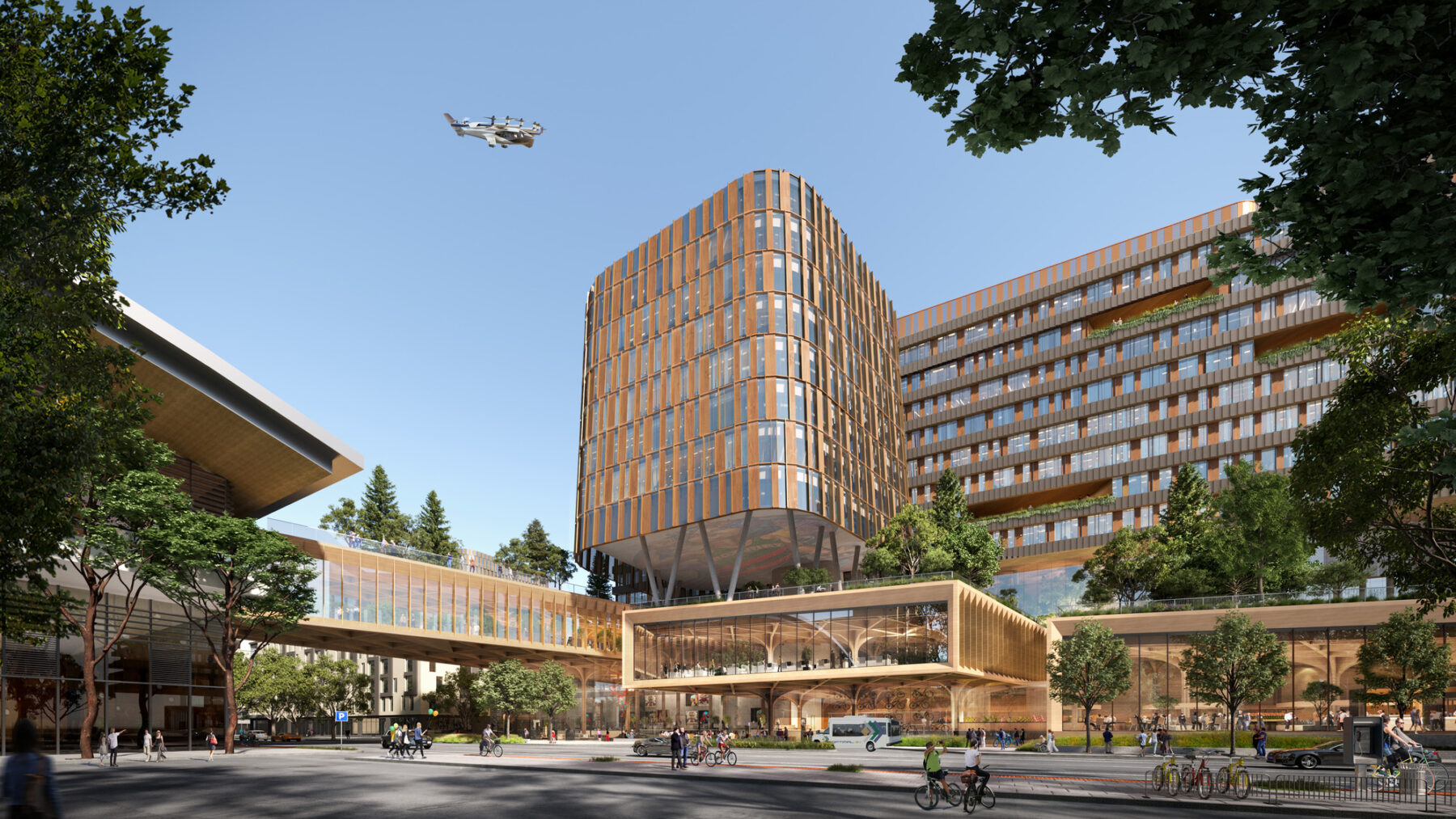
A robust Mobility Hub supports multiple modes of alternative transit, to increase the development’s accessibility as well and decrease GHG emissions from visitors
Embracing the next generation of transportation, the development is designed to support electric Vertical Takeoff and Landing vehicles (eVTOL), small, battery-powered passenger aircraft. With close proximity to Logan Airport, these will play a critical role in reducing individual gas-power car trips to and from the Convention Center and supporting hotels and business for out of town visitors.
In addition, a new, free shuttle service will connect this development to Roxbury’s Nubian Square, providing more transit options and accessibility to neighborhoods throughout the city. Charging stations and a cycling hub support those arriving by bike, whether they need a quick plug in or a repair.
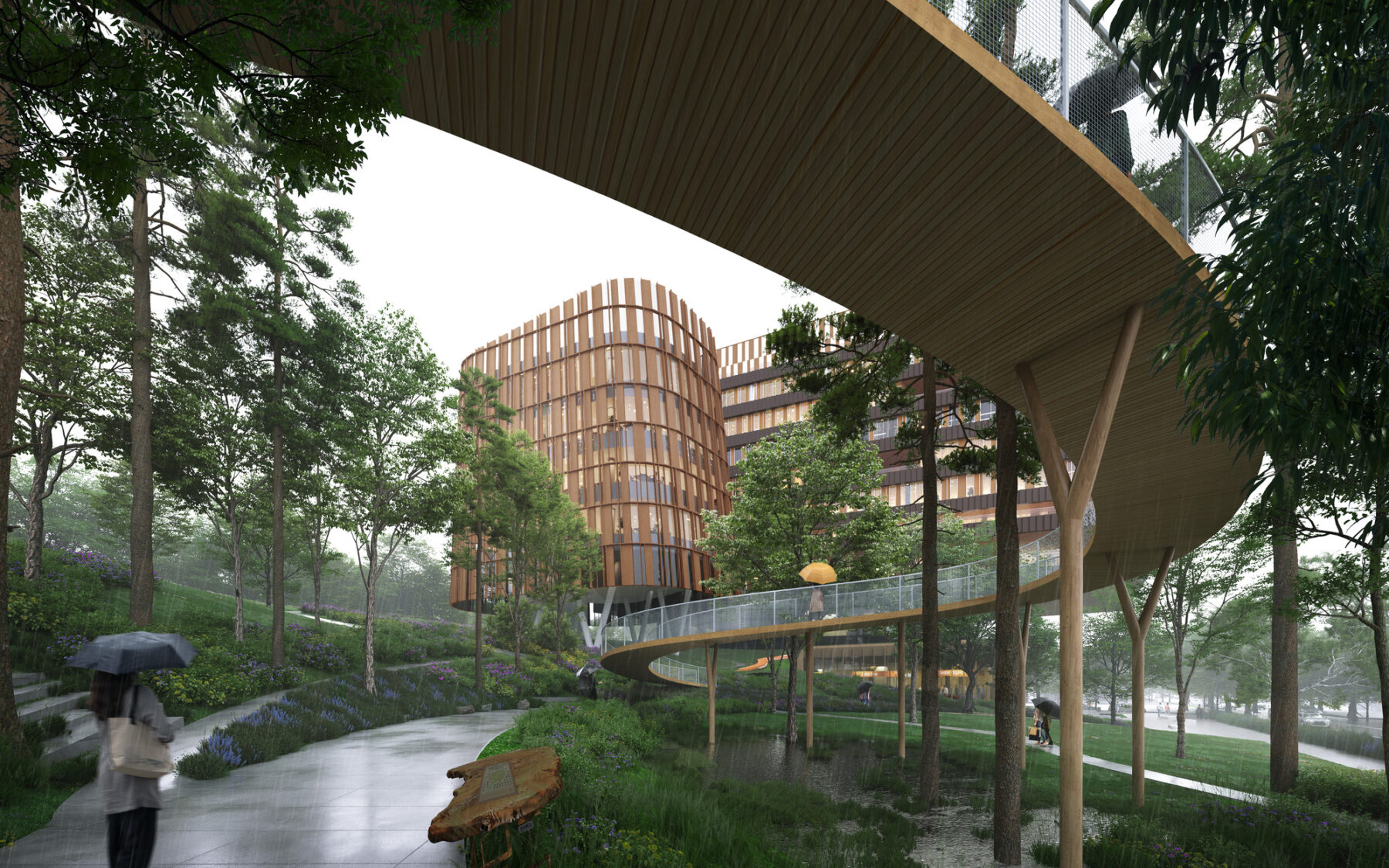
Designed to flood, the landscape holds stormwater on site for future irrigation and to relieve pressure on the city systems
Sitting within Boston’s Coastal Flood Resilience Overlay District (CFROD), the first floor elevation is raised 4.5 feet above the sidewalk, ensuring interior spaces are clear of the flood zone. A series of terraced landscaped platforms navigates the grade change allowing a universally accessible route for visitors to access the site, removing any perceived barrier to the elevated interiors.
The landscape plays a key role in both water management and heat mitigation. The Basin Grove is designed to flood in both high storm surge instances as well as heavy precipitation events. Paired with a vegetated blue roof system, stormwater is well-supported and integrated into the ecosystem and operations of the development. The arboretum additionally includes minimum 50% tree canopy coverage across the site, substantially reducing the heat island effect in this part of the city and providing cooler options for the community during the hotter months. In tandem with the trees are multilayered plantings that support both local pollinator communities as well as migration paths for other species moving through, making the area a more supportive home for native species.
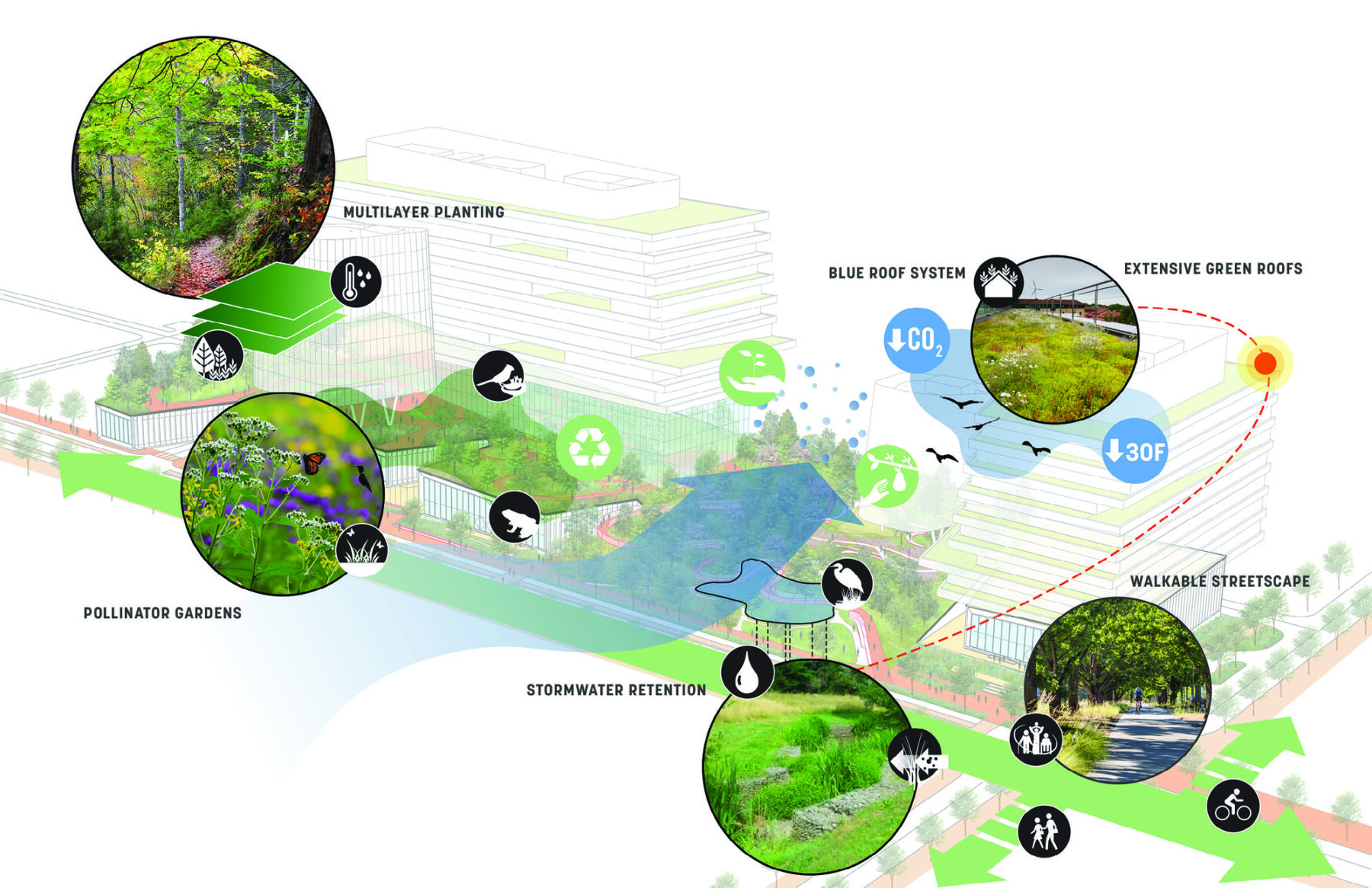
A prime example of significant green infrastructure, the landscape approaches sustainability and resilience from multiple angles
The proposal was submitted in September 2023 to the Massachusetts Convention Center Authority. Read more detail about the full team, the project goals, and the community benefits at the proposal’s website here.
For more information contact Meredith McCarthy or Victor Vizgaitis.
